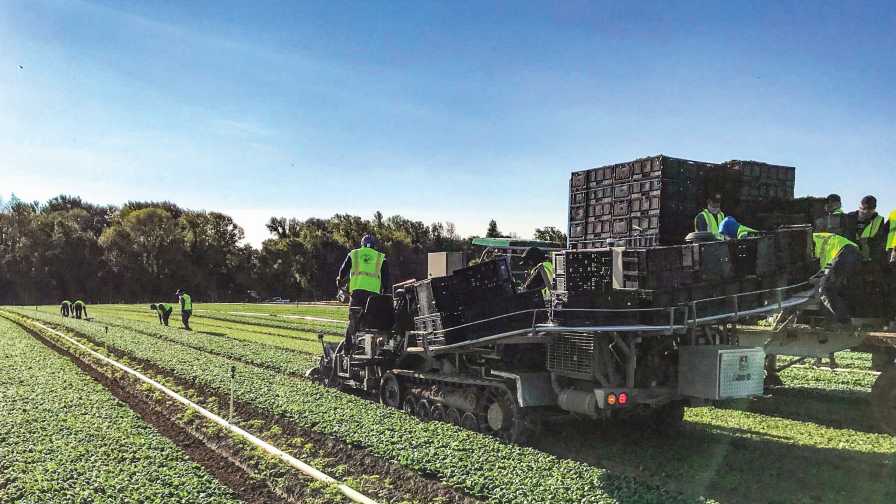Working Remote a Natural Fit for this Organic Grower

By using mobile technology, farm crews can update managers remotely right from the field.
Photo courtesy of Duncan Family Farms
When asked what gives organic growers the advantage during tough times like these, producers gave us a surprising answer: technology.
On reflection, however, it makes sense. Precision agriculture’s aim is to address many of the same issues COVID-19 amplified, like labor shortages, organizing data to make decision making easier and faster, and making changes to production quickly.
How Technology Helps
Stephanie Pharris, Duncan Family Farms’ Equipment Fixed Asset Manager, says technology has been key to the Arizona-based organic operation as it navigated the pandemic.
This is especially true of technology that allows for remote collaboration and oversight.
“With year-round growing operations and locations spanning multiple states, a lot of our technology adoption has been aimed at working better even while apart,” she says.
Part of that includes the online communication tools Duncan Family Farms is using during the pandemic, like Microsoft Teams.
But the operation is also using more production-oriented software.
Duncan uses Trimble Ag Software for remote oversight on its farms across the country.
“It is relied upon heavily by our agronomy and crop protection teams for scouting and sharing the status of crops with operation teams in real-time,” she says.
The program captures all activities:
- Crop planning
- Tillage activities
- Planting
- Irrigation amounts
- Fertilizer applications with
nutrient values - Crop scouting with photos
- Product recommendations
- Spray events
- Harvest activities
- Yield data
“You have it all in the palm of your hand on a mobile device,” she says.
One rather mundane data management feature offers a key benefit during the COVID-19 era.
“Workflow on many farms today involves a lot of direct interaction between managers and workers and includes alot of paperwork physically passing back and forth between people,” points out Kevin Pattison, Director of Enterprise Solutions, Trimble Ag Business Solutions. “Keeping social distancing to keep people healthy on the farm is critical for the farm to keep operating.”
The same concept works between supervisors and crew, Pattison says. It’s as simple as sending work orders digitally or crews turning in production reports electronically.
“Just like this pandemic is forcing other industries to learn new tricks on how to collaborate using technology, farms are going through the same challenge,” Pattison says. “And they need to adapt. By starting to adapt new technologies now, these farms will come out more efficient and streamlined for the future.”
A Team Keeps It Going
Pharris helped establish a data governance committee within the operation. Its goal is to make sure decision makers see accurate data and that the data includes everything they need.
“The members chosen to serve on this committee bring their understanding of various business elements so that there is a voice of each functional area of the business at the table,” Pharris says.
This involves being able to cross-check the data. The team pulls data from the various systems it uses into its own data warehouse.
The committee also ensures the data is easy to access and make sense of.
“[We] establish continuity between naming conventions, etc., so that they can link systems together to allow for combined reporting,” Pharris says.
None of this will work if the organization does not have infrastructure in place. That includes employees trained for data entry to audit and correct errors.
The team has been in place for a couple of years at this point, and it’s working well.
“Over time, with continued software developments and continued use, these systems have become a trusted source of information for daily decision-making,” Pharris says.
Next Steps
With the system up and running, the committee is now turning its eyes to reducing data entry and increasing automated entry. Here are a few projects the team is working on to that end:
- Printing QR code pallet labels in the field that can be scanned into the farm’s ERP system postharvest;
- Mapping planted acres with hardware in the tractors that automatically feeds that data into the operation’s farm management software;
- Rolling out a new platform that will simplify food safety assessments and map tissue sampling paths; and
- Automating irrigation data input via flow meters and new technologies.
“Implementing a new technology of any kind is just a first step,” Pharris says. “Staying the course to ensure it is embedded in and bringing value to your operations is critical. It is a commitment, but it is very well worth the time invested.”










